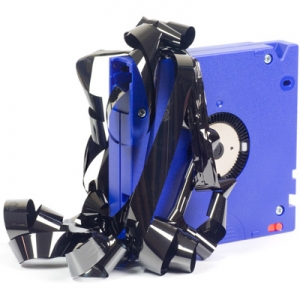All businesses need an effective backup solution for their vital data. Loss of data as the result of a disaster can destroy a business, so Backup and Disaster Recovery measures are absolutely essential. Backing up data to magnetic tape is a method that’s been around for a long time, but it has some disadvantages relative to other methods of storing copies of your data.
It’s Not Automated
It might not seem like a big issue, but with tape backup someone has to replace the tape that has been backed up overnight and put the old one into storage. If you want to store the backup offsite then someone has to take it home or take it to the storage site. It’s also not the most secure solution, since it’s easy for someone to pocket it or simply for a tape to get misplaced as a result of human error.
A Snapshot per Day
A tape backup generally needs to be run after hours because it’s not great at backing up while people and applications are using files at the same time as the backup is taking place. This is a real limitation, because backing up once a day means that if disaster strikes you will likely lose a whole day’s worth of data. The NAS (Network-attached Storage) Disk-to-Disk Solution that Quikteks offers as part of our BDR (Backup and Disaster Recovery) solution gets past this problem, with more regular backups through the day.
Restoration Time is Slow
Do you remember the days before music CDs, when finding the audio track you that you wanted on a cassette involved fast-forwarding to find it? Then came CDs and mp3 players, where you could jump to the precise track you needed in an instant. The same problem applies to tape backup for computers. You have to go through the whole tape to restore your data. If you have a lot of data that is backed up onto multiple tapes it can be a long and tedious process.
Tape doesn’t Last Forever
No storage medium is forever (unless you’re carving it onto stone blocks), but tape doesn’t do well over time. The only digital storage that’s worse is the rewritable CD/DVD. Tape backups need to be replaced every one to two years. Even then, corruption is possible in tapes that aren’t as old as that. Without a massive and time-consuming effort you can’t even test your backup tapes to see if the data is well-preserved. If the worst happens and you need to restore your data, you could discover that all that tape-changing and archiving has been for nothing.
Tape isn’t Cheapest
There was a time when tape was cheaper per gigabyte than storing it on another hard disk drive, which was the principal alternative. This is no longer true. Backing up to a hard drive may cost a bit more, but you can cut out the labor-intensive maintenance and management of tape backup systems and reduce the likelihood of data corruption.
For small and medium-sized businesses, there are multiple advantages to switching to a more automated and dependable backup system and ditching the tape. Our Backup and Disaster Recovery solution backs up data several times a day and it’s much easier and quicker to restore data if required. Our BDR can even stand in for your server if you experience hardware problems. To learn more about our BDR give us a call at (973) 882-4644.

